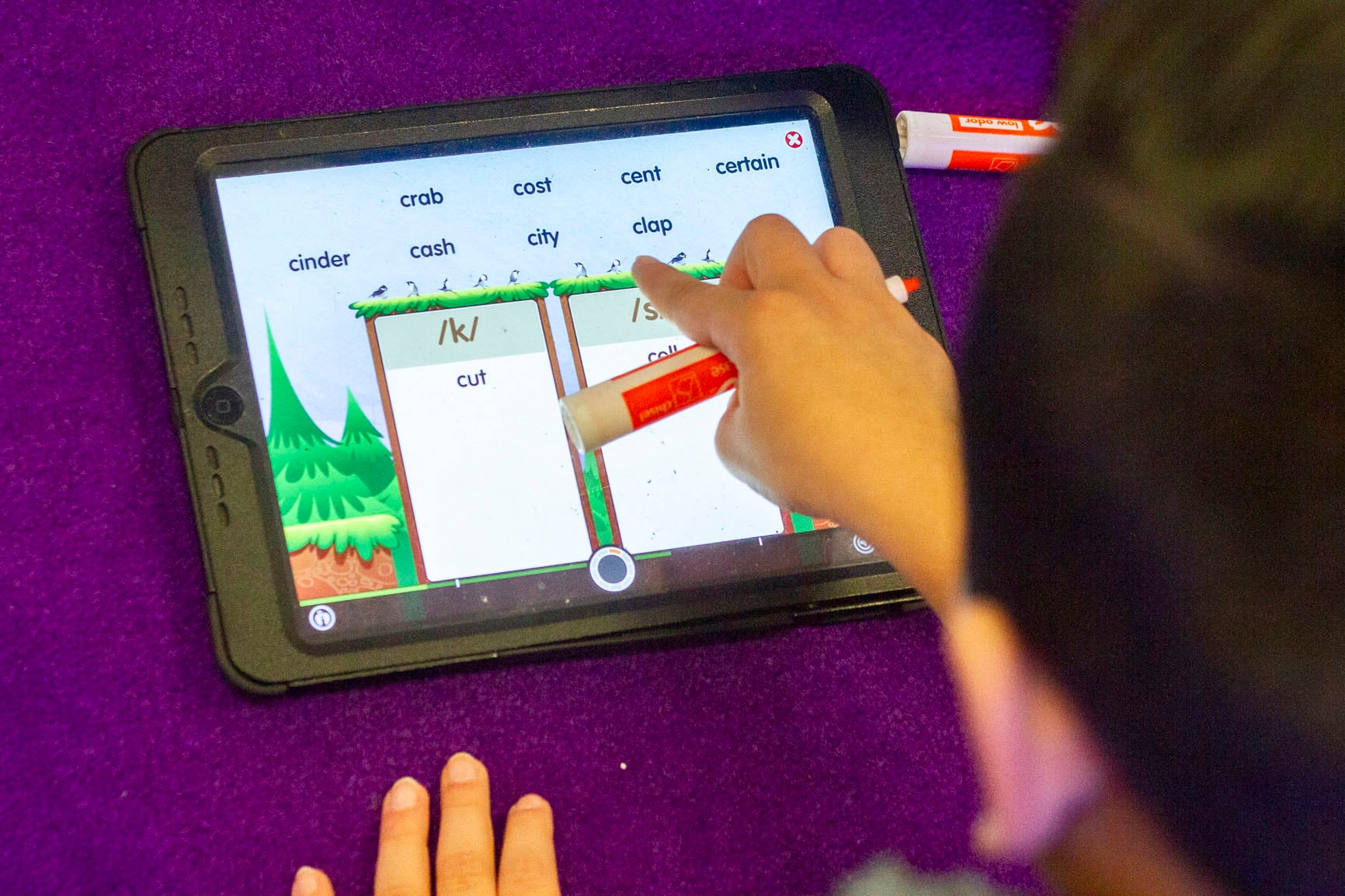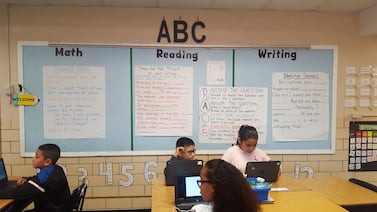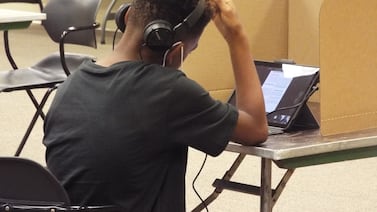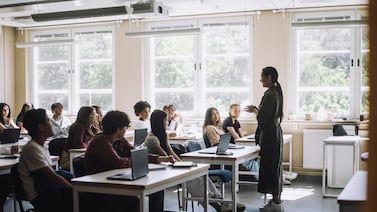Chicago Public Schools is ramping up its push to hand out devices to students, with a second wave of schools slated to get computer shipments in coming weeks.
The district had initially ordered 37,000 new devices, but after hearing from schools about higher needs bought 16,000 devices more recently. The purchases of Chromebooks, iPads and laptops are part of roughly $32 million the district has spent so far to respond to the coronavirus crisis that shuttered schools throughout Illinois and shifted much learning online.
The district is roughly halfway through handing out the new computers plus about 65,000 devices schools already had on hand — a total of 115,000 digital devices in all. It has so far prioritized an initial group of schools in some of the city’s highest-poverty neighborhoods, but other schools will see reinforcements as well.
But amid educator concerns that they are still not reaching many of their students, the district’s governing board pressed administrators Wednesday to expand access to the internet. During their virtual monthly meeting, board members suggested Comcast and other major providers could do more to help needy students — and questioned whether district and city officials could do more to pressure them.
“This requires much more cooperation from Comcast,” said board President Miguel del Valle. “In unprecedented times you need to do things differently.”
At the board’s previous meeting in March, members unanimously voted to allow the district to spend up to $75 million for its coronavirus response without prior board approval. District leaders said they needed the flexibility of this blank check to act swiftly and decisively during an uncertain time. They said the money would go toward technology, meal distribution, overtime pay for front-line school workers, and other expenses.
This week, the district reported about $5 million in expenses so far under that authorization: about $2.3 million on 11,600 hotspots to provide internet access for students in temporary living situations, $2.6 million on premium pay for front-line staff such as janitors and $18,900 for face masks.
School board members had been separately briefed on millions of additional spending under existing contracts and previous authorizations, including the device purchases — but the district has not yet made these expenses, which fall outside the $75 million most recently authorized by the board, publicly available.
In response to questions from Chalkbeat, the district said it spent $6.5 million on Chromebooks, $4.8 million on laptops and $2.5 million on iPads.
District spokesman James Gherardi said that later this month, the district will start posting monthly updates on its website that outline all spending “done to support students during the COVID-19 crisis.”
Chicago, the state’s largest district with 355,100 students, is slated to receive $205.7 million in emergency federal funds to support districts’ coronavirus response efforts, according to preliminary figures. Some of the money will go to private and charter schools. The state has encouraged districts to spend that money on strengthening their infrastructure to deliver learning remotely.
Chicago officials said they are working on a plan for spending the federal dollars, which they will also make public down the road.
“There are a lot of unknowns,” said school chief Janice Jackson, noting uncertainty about the coronavirus outbreak’s impact on the economy and the state’s budget. “$200 million sounds like a lot of money, but it’s not a lot.”
CPS Chief Information Officer Phillip DiBartolo noted the district has estimated 115,000 students need a digital device. Adding to the tablets and laptops schools already have, the new purchases get the district to that number — though he cautioned that some devices will likely need to get replaced as they are damaged or lost. He added the district — the third largest in the country – has been able to use its “buying power” to expedite the purchases despite significant backlogs.
“My sense is that next week will be a very heavy distribution week,” he said.
DiBartolo said the district estimates 115,000 students also lack internet access. But because the district didn’t have a stockpile of mobile hotspots before the outbreak, that’s a tough gap to bridge. To complicate matters, hotspot devices are in extremely short supply because of high demand and COVID-19 disruption to production in Asia.
District schools largely continue to steer families to a Comcast internet program for low-income residents, which comes with two free months, and other low-cost offers. Some community nonprofits have criticized what they see as the Comcast deal’s problems.
DiBartolo said district and city leaders have reached out to internet service providers to ask for more help.
But some school board members said some families have balked at signing on to these offers for various reasons, including concern about credit checks and charges eventually kicking in.
They pressed the district on what response they are getting from providers.
“We’re pushing very hard to do right by our students,” DiBartolo said.








